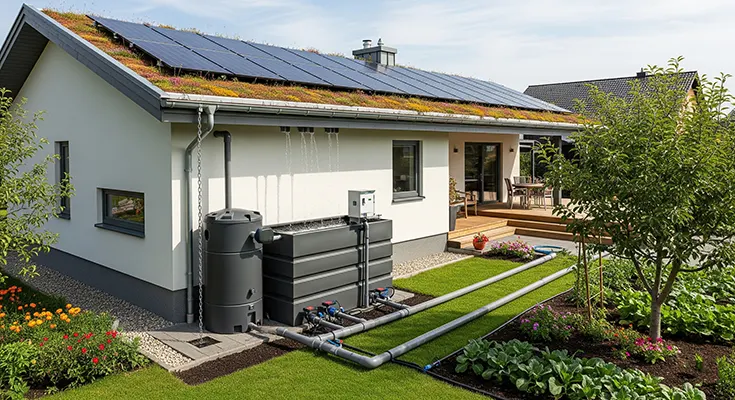As environmental concerns and water scarcity continue to rise globally, sustainable water management has never been more critical. One effective and eco-friendly solution gaining popularity is rainwater harvesting systems for sustainable home irrigation. These systems allow homeowners to collect, store, and use rainwater to irrigate gardens, lawns, and landscapes, reducing dependence on municipal water supplies and contributing to water conservation efforts.
What is Rainwater Harvesting?
Rainwater harvesting involves collecting rainwater from surfaces like rooftops and channeling it to storage tanks or cisterns. Instead of allowing rainwater to run off into storm drains or the ground where it might cause erosion or flooding, harvesting captures this resource for later use, primarily in irrigation.
Benefits of Using Rainwater Harvesting Systems for Home Irrigation
- Water Conservation: Using harvested rainwater helps reduce the demand on municipal or well water systems.
- Cost Savings: Lower water bills as rainwater is free and abundant, especially during the rainy season.
- Improved Plant Health: Rainwater often contains fewer salts and chemicals compared to tap water, which can be beneficial for plants.
- Reduce Flooding and Erosion: Capturing rainwater helps to mitigate runoff that can harm landscaping and local waterways.
- Environmentally Friendly: Decreases reliance on treated potable water for irrigation, reducing energy usage and carbon footprint.
Components of a Rainwater Harvesting System
- Catchment Area: Usually the roof of a home where rainwater is collected.
- Gutters and Downspouts: Channels directing water from the roof to storage.
- First Flush Diverter: Ensures the initial dirty runoff is diverted away from the storage tank.
- Storage Tank or Cistern: Holds the collected rainwater; sizes vary depending on need and space.
- Filtration System: Removes debris and contaminants from the water before storage or use.
- Distribution System: Pipes, pumps, and irrigation lines that deliver water to gardens or lawns.
Steps to Implement a Rainwater Harvesting System for Home Irrigation
- Assess Your Water Needs: Determine how much water your garden or lawn requires based on plant types and area size.
- Calculate Roof Catchment Area: The larger the roof, the more rainwater you can potentially collect.
- Estimate Rainfall: Use local climate data to estimate the average rainfall in your area.
- Select Storage Capacity: Choose a tank size appropriate for your water needs and space availability.
- Install Gutters and Downspouts: Ensure they are clean and efficiently direct water to your storage system.
- Incorporate Filters and First Flush Diverters: Keep your water clean to protect plants and irrigation equipment.
- Set Up Distribution for Irrigation: Connect storage to drip irrigation or sprinklers for efficient watering.
- Maintain the System: Regular cleaning, inspections, and monitoring ensure longevity and effective operation.
Tips for Maximizing the Efficiency of Rainwater Harvesting Systems
- Use drip irrigation techniques to deliver water directly to plant roots, minimizing water waste.
- Mulch your garden beds to retain soil moisture.
- Position tanks and cisterns in shaded areas to reduce algae growth.
- Regularly clean gutters and tanks to prevent blockages and water contamination.
- Combine rainwater harvesting with greywater recycling for an even more sustainable irrigation system.
Adopting rainwater harvesting systems for sustainable home irrigation is a smart and responsible approach to conserve water, reduce utility costs, and promote environmental stewardship. By collecting and utilizing natural rainfall, homeowners can sustain lush gardens and landscapes while lessening their impact on municipal water supplies and the planet. Whether you live in a rainy region or an area prone to drought, rainwater harvesting offers a versatile and effective solution to ensure your home irrigation is both sustainable and efficient.




